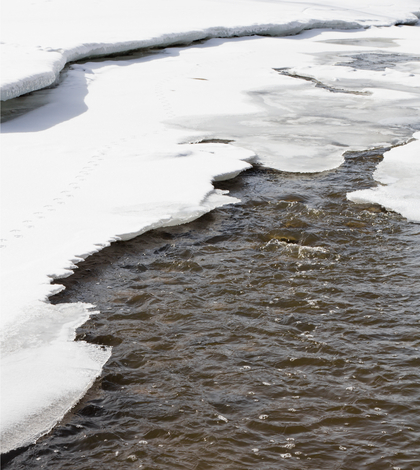With the Eastern Sierra’s snowpack at 241 percent above normal, Los Angeles Mayor Eric Garcetti has declared a local State of Emergency in advance of an anticipated one-million acre-feet of runoff into the Owens Valley. Garcetti’s concern is for the potential damage to local communities, hydroelectric plants and dust mitigation in Owens Lake due to excessive snowpack runoff and flooding.
Los Angeles’ water ties to the Eastern Sierra and the Owens Valley dates back to the late 19th century when the LA basin began to outgrow its water supply. Los Angeles constructed an aqueduct to divert water from the Owens Valley to a thirsty Los Angeles in what is today known as the California Water Wars. Even today, Los Angeles is responsible for dust mitigation in the Owens Valley and the city has spent more than $1 billion on dust mitigation in Owens Lake in the last two decades.
“Public safety is among our core values as an organization,” said Los Angeles Department of Water and Power (LADWP) General Manager David H. Wright. “LADWP has made a commitment to the residents of the Owens Valley to control dust emissions that can be harmful to breathe, and have spent over $1 billion on infrastructure to mitigate this dust. As storm waters threaten to destroy much of this investment, we must honor our commitment to the residents of the Owens Valley to reduce this form of air pollution, just like we honor our commitments to rate payers in the L.A. Basin. This Declaration by Mayor Garcetti today allows us to bypass lengthy supply procurement regulations to ensure that we can immediately continue to keep particulate matter from being blown off the dry lake playa during periods of high winds.”
The mayor’s Emergency Declaration will prompt city rules that will enable the LADWP to move quickly in response to the anticipated treat. It also allows the city to initiate the process of requesting aid from the state and federal governments.
“I am declaring a local State of Emergency today because we have a responsibility to protect Angelenos and the people of the Owens Valley — we must act quickly to address this threat,” said Mayor Garcetti. “I have also requested that Governor Brown help us coordinate our response with state agencies.”
The Emergency Proclamation will activate special city rules that enables LADWP to contract for the goods and services it needs more quickly. However, since the Emergency Proclamation is intended to last longer than seven days, the declaration will require approval by the city council.
The anticipated runoff is projected to be nearly twice the amount of water that Angelenos use in a year. The DWP is already taking measures to prepare for the snowmelt through a variety of actions. The existing flood control infrastructure is being shored up and reservoirs along the Aqueduct are being emptied to prepare for the snowmelt, to protect hydroelectric power plants and to help protect critical endangered species’ habitats from being flooded. The agency is also spreading water along the length of the L.A. Aqueduct system so excess water can be used to replenish underground aquifers as well as maximizing flows throughout the system by using more Aqueduct water to supply the Los Angeles basin.
Garcetti and his administration have outlined a series of goals to make the City more sustainable and to working toward combating climate change. The Sustainable City pLAn details plans for water conservation, carbon emission reduction, climate resiliency and expanding the use of renewable energy. This historic snowpack directly after a historic drought is an example of the extreme climate patterns modeled in many climate studies.
“This emergency reminds us that climate change is not a problem for the distant future — it is already causing harm, and we know there is more to come. That’s why it’s critical for us to continue investing in infrastructure that makes our City more sustainable and resilient, and continue pushing to reduce our carbon emissions,” he added.
 California Water News Daily Your Source For Water News in California
California Water News Daily Your Source For Water News in California


